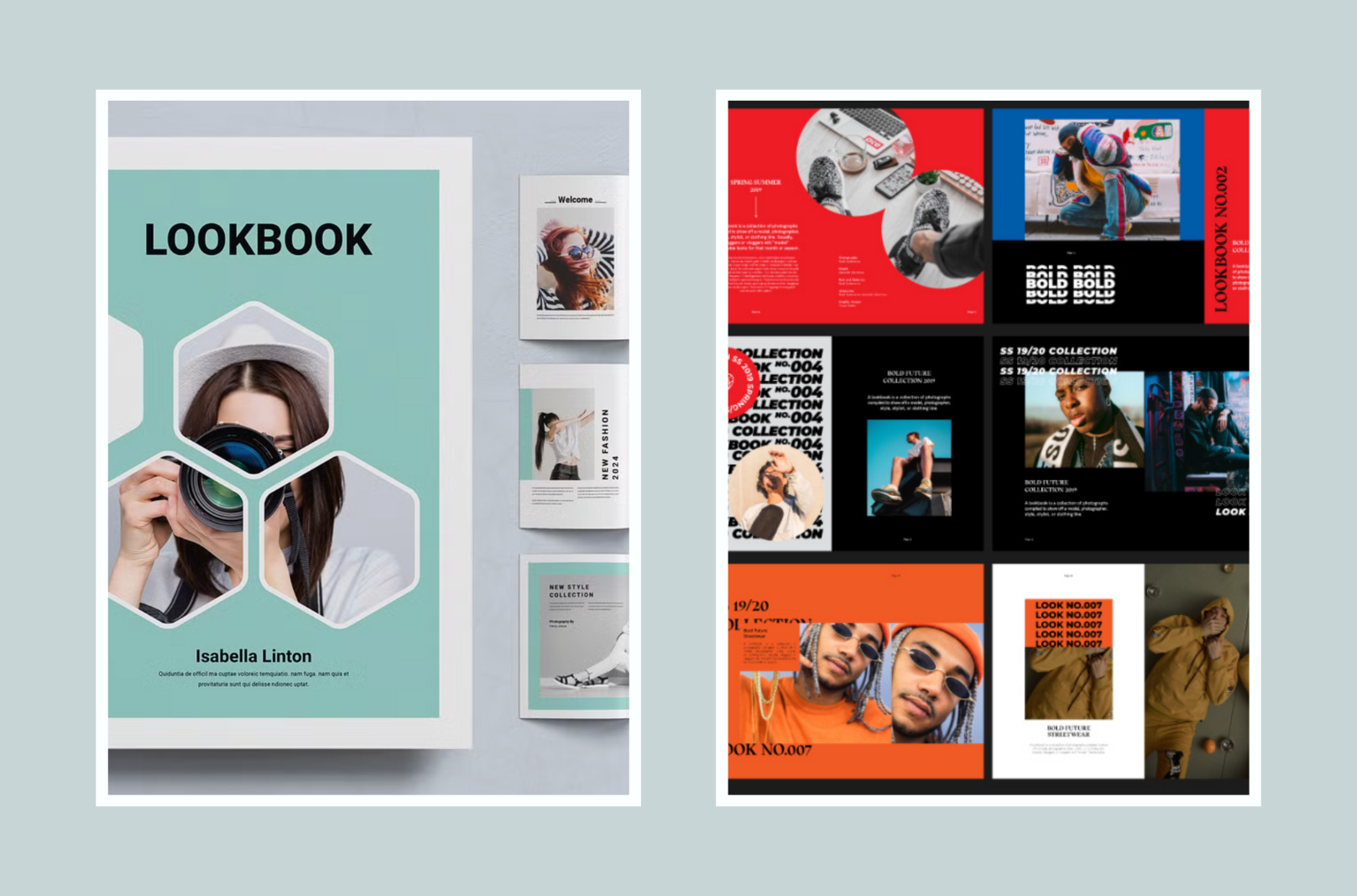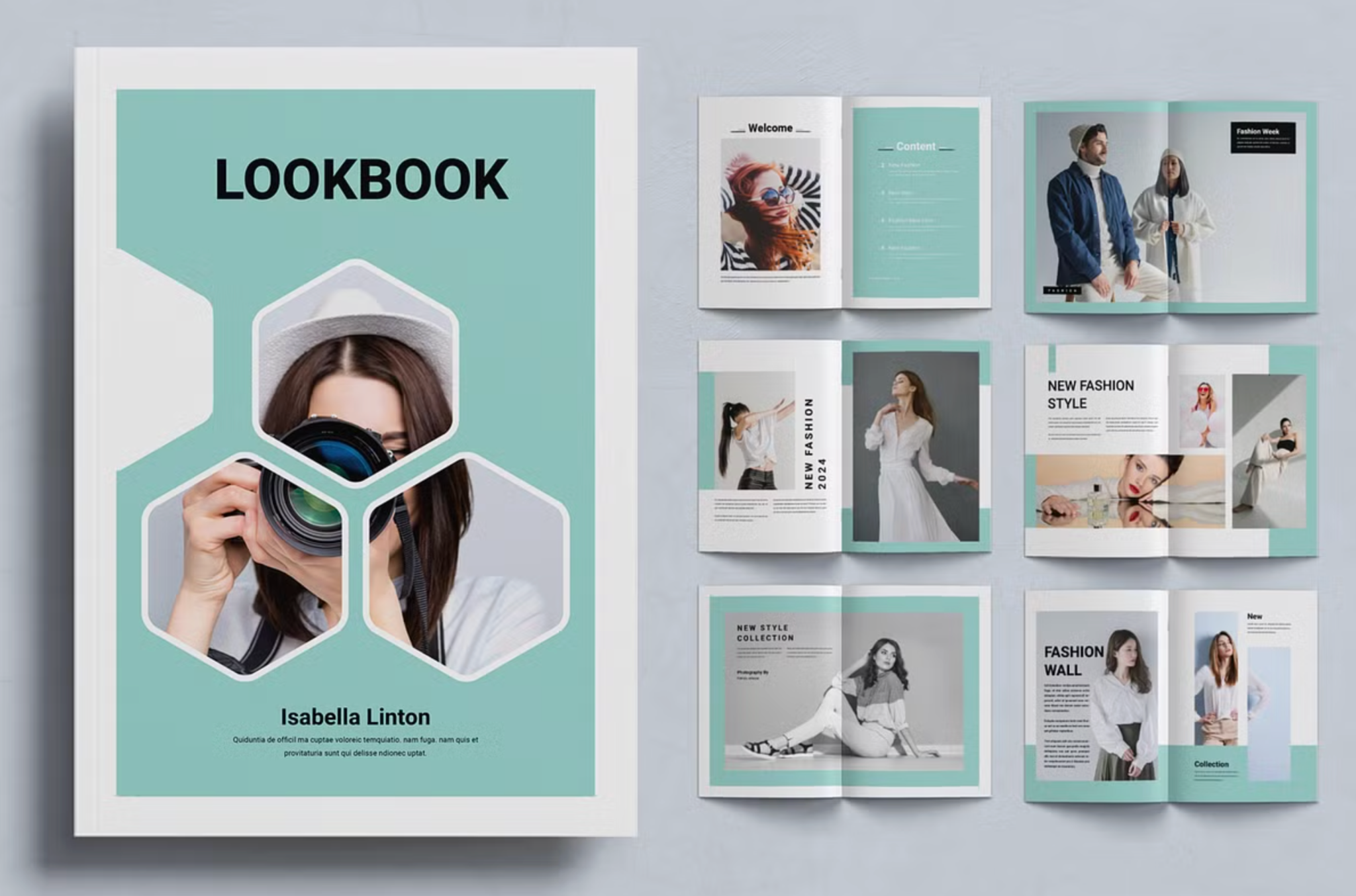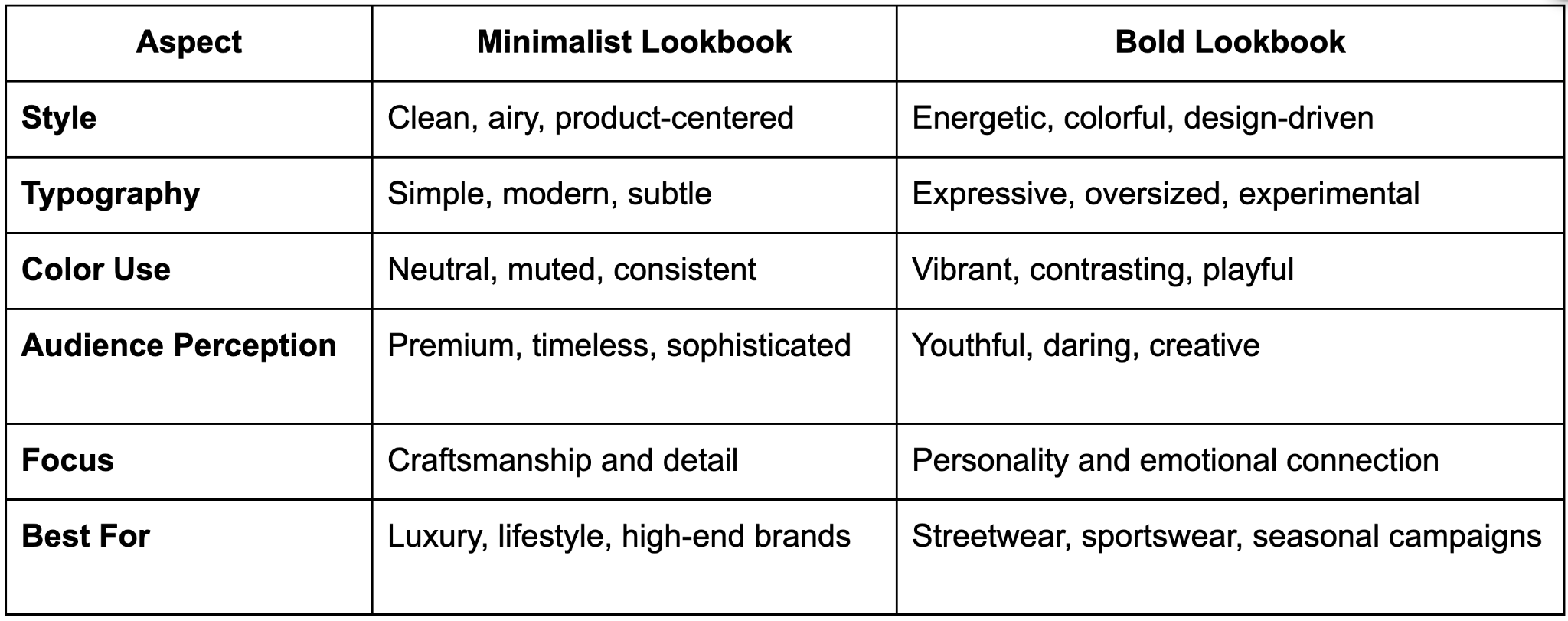
A lookbook is more than a product catalog, but it’s a visual storytelling tool that communicates your brand’s identity and style. The way you design your lookbook influences how customers perceive your products, how they emotionally connect with your brand, and even whether they decide to buy. Two dominant design directions are minimalist and bold. Both can be effective, but they work in different contexts and appeal to different types of audiences. Choosing the right approach requires an understanding of your brand values, customer preferences, and the shopping experience you want to create.
Minimalist lookbooks focus on clarity, elegance, and simplicity. They strip away distractions, letting products speak for themselves. On the other hand, bold lookbooks thrive on energy, contrast, and creativity, using color, typography, and layout to leave a strong impression. Neither is “better” in absolute terms, it’s about which aligns more closely with your brand identity and customer expectations.

A minimalist lookbook uses a clean, uncluttered layout with plenty of whitespace, soft or neutral backgrounds, and understated fonts. The main goal is to keep the focus on the product, not the design elements.
Key characteristics:
Minimalism conveys sophistication and timelessness. It appeals to customers looking for elegance, premium quality, and authenticity. Luxury fashion, accessories, and lifestyle brands often rely on this approach to highlight craftsmanship.

A bold lookbook takes the opposite approach, it’s about making a statement. Using striking visuals, vibrant colors, and dynamic layouts, it communicates brand personality and grabs attention instantly.
Key characteristics:
Bold designs are memorable and emotionally engaging. They appeal to younger, trend-driven audiences who value creativity, uniqueness, and energy. Streetwear, sportswear, and fast-fashion brands often use this style to showcase personality and connect with lifestyle-driven buyers.
Pros:
Cons:
Pros:
Cons:

The decision between adopting a minimalist or bold lookbook design is not about which style is universally “better,” but rather about which is best aligned with your brand’s identity, the type of products you sell, and the preferences of your target audience. Both approaches can elevate your lookbook in different ways, but the timing and context for using each are crucial.
Minimalist lookbooks are most effective when your goal is to highlight the product itself without distractions. This style works particularly well in the following cases:
In these scenarios, minimalism reinforces trust, clarity, and sophistication, encouraging customers to take time exploring your products in depth.
Bold lookbooks, on the other hand, shine when you want to make an immediate impact and evoke strong emotions. Consider using bold designs in the following situations:
This approach focuses less on detail and more on emotion and personality, sparking curiosity and encouraging quicker, impulse-driven actions.
While choosing between minimalist and bold designs is important, many successful brands don’t lock themselves into just one style. Instead, they blend elements of both approaches to create lookbooks that feel fresh, versatile, and aligned with different campaign goals. The key lies in knowing which design aspects to emphasize and when to use them.
Balancing minimalist and bold doesn’t mean splitting the page 50/50. Instead, it’s about strategically weaving bold accents into a minimalist framework, or vice versa. Here are a few ways brands achieve this balance:
Minimalist Layout + Bold Accents
Bold Covers + Minimalist Interiors
Minimalist for Product Detail, Bold for Storytelling
Seasonal or Collection-Based Mix
Finding the right balance between minimalist and bold design often sounds easier than it is. Many brands struggle to keep consistency while experimenting with different styles for various collections or campaigns. This is where Lookfy, a Shopify lookbook app, comes in handy. It’s designed to help store owners create stunning, flexible lookbooks without needing advanced design or coding skills, making it easier to test and refine your approach.

With Lookfy, you can:

When it comes to lookbook design, there’s no one-size-fits-all answer. Minimalist lookbooks excel at showcasing craftsmanship, elegance, and timeless appeal, making them ideal for premium or detail-oriented products. Bold lookbooks, on the other hand, thrive on energy, storytelling, and impact, capturing attention quickly and creating excitement around trend-driven or seasonal collections.
The real key is understanding your brand identity, product type, and audience expectations. Many brands find success by blending both approaches, using minimalism to highlight product details while incorporating bold accents for campaigns, headlines, or calls-to-action.
With tools like Lookfy, you don’t have to commit to just one style. You can easily create, customize, and test both minimalist and bold lookbooks, ensuring that your store design adapts to different collections and resonates with diverse customer groups.
In the end, the best lookbook design is the one that not only looks stunning but also strengthens your brand story and drives conversions.